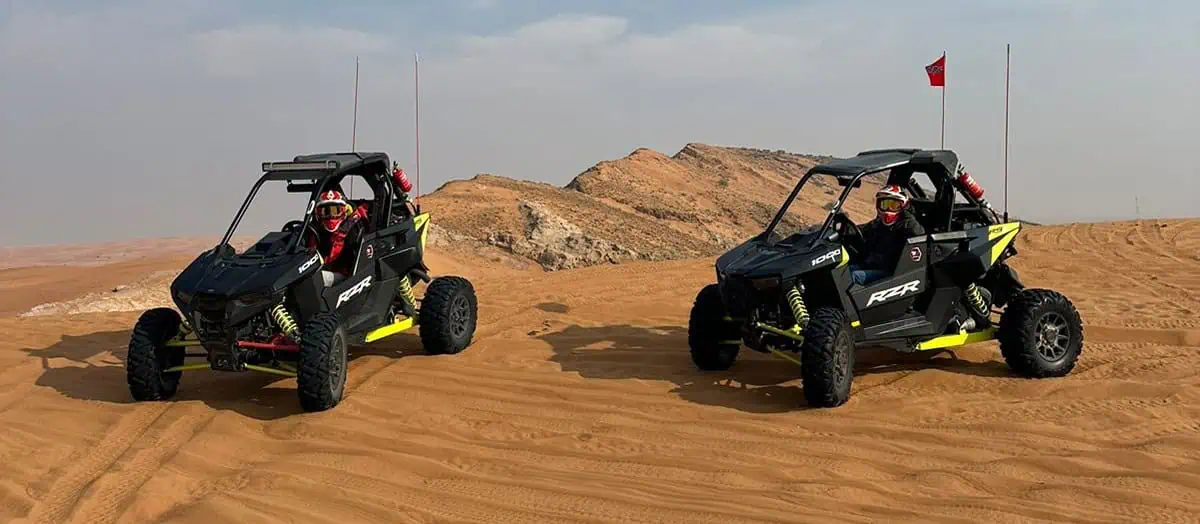Embarking on a MXDubai presents a unique opportunity for photographers. The thrill of capturing the essence of these sandy terrains is unmatched. In this guide, we’ll navigate through the essentials of dune buggy photography, ensuring you take home memories and stunning visuals that tell a story.
Mastering the Art of Composition in Dune Photography
Understanding composition is crucial in dune buggy photography. The rule of thirds plays a significant role here. Position your dune buggy along the intersecting lines for a balanced shot. Incorporate the vastness of the dunes for a sense of scale. This technique adds depth and interest to your photos.
Harnessing the Power of Light
Lighting can make or break your dune buggy photographs. The golden hours, sunrise and sunset, offer soft, warm light. This time is ideal for highlighting the textures and contours of the dunes. Midday light, though harsh, can create dramatic shadows and contrast, adding a different dimension to your shots.
Capturing the Action
Dune buggy adventures are all about movement. To freeze the action, a fast shutter speed is essential. Experiment with speeds to find the perfect balance between clarity and motion blur. This technique adds a dynamic element to your photos, bringing them to life.
Utilizing the Right Gear
Selecting the right equipment is pivotal. A DSLR or mirrorless camera with a versatile zoom lens is ideal. This setup lets you capture vast landscapes and zoom in for close-up action shots. Remember a sturdy tripod for those long-exposure shots during sunrise or sunset.
The Importance of Perspective
Experimenting with different perspectives can transform your photographs. Try low-angle shots to emphasize the dunes’ size or the jump’s height. Alternatively, a higher vantage point can capture the expanse of the dune landscape, providing an entirely different perspective.
Editing for Impact
Post-processing is the final step in your dune buggy photography journey. Adjusting contrast, saturation, and sharpness can enhance your images. Remember, the goal is to reflect the experience of the dunes, so keep edits realistic and accurate to the scene.
Safety First
Always prioritize safety. Ensure your equipment is secured and protected from the sand. Be aware of your surroundings and the movement of the dune buggies. Safety should never be compromised for the sake of a photo.
Fine-Tuning Your Focus
In the ever-changing landscape of the dunes, focusing can be challenging. Use autofocus with tracking to keep your subject sharp, especially when capturing moving dune buggies. For static landscapes, manual focus might give you more control in achieving crisp, clear shots.
The Color Palette of the Dunes
Dunes present a unique color palette, ranging from vibrant oranges to subtle beiges. Embrace these natural hues in your photography. Adjust the white balance settings on your camera to accurately capture the warmth and tone of the sand, especially during the golden hours.
The Role of Negative Space
Negative space, the area around and between the subjects of an image, can be a powerful tool. In dune photography, the expansive sky or unoccupied sand areas serve as negative space, drawing focus to the dune buggies. This technique can create a minimalist yet impactful photograph.
Capturing the Human Element
Including people in your dune buggy photographs adds a relatable element. Capture the excitement of the drivers or passengers. Show the interaction between humans and the vastness of the dunes. These shots often tell the most compelling stories.
Experimenting with Angles and Lenses
Don’t hesitate to experiment. Different lenses can offer new perspectives. A wide-angle lens can capture the expanse of the dunes, while a telephoto lens can focus on distant details. Also, try various angles – shoot from ground level or, if possible, from an elevated position for a bird’s-eye view.
The Art of Sequencing
When presenting your dune buggy photographs, consider the sequence. Start with vast landscapes to set the scene, follow with action shots, and conclude with close-ups or portraits. A well-thought-out sequence takes the viewer on a visual journey through your dune buggy adventure.
Incorporating Environmental Elements
Be mindful of the environmental elements. Wind can create interesting patterns on the sand’s surface, while clouds can add drama to the sky. Use these elements to your advantage to add texture and depth to your photographs.
Respecting the Environment
Lastly, respect the natural environment. Stay on designated paths to protect the dunes. Be mindful of wildlife and plant life. Responsible photography not only preserves the beauty of these landscapes but ensures future generations can enjoy them.
Final Thoughts
Dune buggy photography, with its unique challenges and rewards, is an exhilarating way to capture the essence of adventure and the beauty of nature. By mastering these techniques, you’ll improve your photography skills and deepen your appreciation for the natural world. Remember, each photograph you take is a memory preserved, a story told, and an experience shared. Happy shooting!
